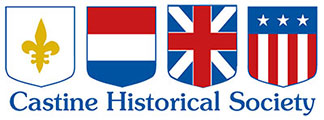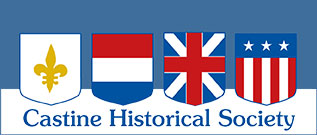FAQ
Who was the Marquis de Lafayette?
Marquis de Lafayette (1757-1834)was a French aristocrat and military leader who boldly championed the cause of freedom and individual rights. Lafayette is most remembered for his role as a major general for the Continental Army under General George Washington during the American Revolutionary War (1775-1783). Please visit our History of Lafayette (link) to learn more.
When, where, and why was the original Hermione built?
The original Hermione was built in 1779 at the naval yards in Rochefort, France. Its first mission was to transport the Marquis de Lafayette as quickly as possible to the newly created United States to inform the colonists that France would support their efforts against the British during the American Revolutionary War.
What is a frigate?
A frigate is a fast naval vessel built during the late 17th, 18th, and early 19th century known for its speed and maneuverability. These ships had lofty rigs and were heavily armed on one or two decks.
Why did the Hermione come to Castine in 2015?
The original Hermione sailed to Maine (then part of Massachusetts) in 1780 on a reconnaissance mission to assess the British force occupying the strategic town of Castine (then Pentagoet). Today Castine is a singular reminder of French history in the United States, therefore, a small group of Castine residents convinced the Friends of Hermione 2015 to include Castine on the ship’s itinerary.
Where else did the Hermione stop?
The Hermione made 12 stops along the east coast of North America.
- Yorktown, VA
- Mt Vernon, VA
- Alexandria, VA
- Annapolis, MD
- Baltimore, MD
- Philadelphia, PA
- New York, NY
- Greenport, NY
- Newport, RI
- Boston, MA
- Castine, ME
- Lunenburg, NS, Canada
How similar is today’s Hermione to the original?
The new Hermione was built from the plans of La Concorde, a sister ship. The near perfect replica is 216 feet long with 3 masts, 19 sails, and is constructed from 2000 oak trees. The original plans have been modified for reasons of strength and safety. The 32 cannons are lightweight and non functional. Planks have been bolted rather than pegged to avoid movement during the long period of construction (16 years in Rochefort, France). The engine has been fitted for safety and a generator has been installed for the comfort of the 78 crew members. Sails are made of synthetic material (less weight), therefore, fewer crew is necessary.
What happened to the original Hermione?
The Hermione returned to France in February 1782 at the end of the American Revolution after battling the British Navy blockade and taking part in the French Naval force at Yorktown. While in service against the British in 1793, she ran aground off western France (Croisic) and was wrecked by heavy seas. Hermione’s pilot, Guillaume Guillemin du Conquet, was held responsible for this tragedy.
Who are the crew members?
Hermione has a crew of 17 professional seamen, 54 volunteers and 6 media. Crew candidates must be physically fit, robust, and enthusiastic. Volunteers ranging in age from 18 to 35 were trained in Rochefort, France before Hermione’s departure to the USA in summer 2015.
Why is the ship named Hermione?
The ship is named in honor of Hermione, the only child of King Menelaus of Sparta and his wife Helen of Troy.
What is the overall length (including flag pole) of the Hermione?
The overall length of the Hermione is 66 meters (216 feet).
How much fuel is on board Hermione?
Hermione’s fuel tanks hold approximately 28,000 liters (7,397 US gallons).
How much water is on board Hermione?
Hermione’s water tanks hold approximately 15,000 liters (3,962 US gallons).

